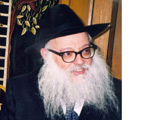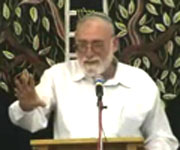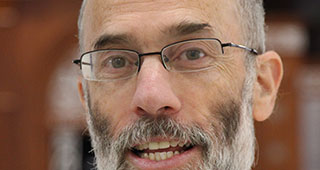Beit Midrash
- Torah Portion and Tanach
- Shmot
- Va'era
To answer this question, let’s employ the time-honored strategy of asking yet another question! When detailing the genealogy of the Tribes later in the parsha, the pasuk says: "THIS was Ahron & Moshe, to whom Hashem had said, ‘Take Bnei Yisrael out of Egypt!’ They were the ones who spoke to Paro to release Bnei Yisrael from Mitzrayim. THIS was Moshe & Ahron."
Now, aside from the fact that Moshe & Ahron’s names are reversed (which Rashi says indicates their equal status) why is it necessary to both preface & conclude the statement with "this was Moshe & Ahron?" Wouldn’t it have sufficed to say it once, rather than twice? And what is the "this?"
Indeed, if the Torah was looking for one, defining image of Moshe & Ahron, would "this" really be it?! Why not describe Moshe as the one who split the sea, or the one who brought down the Luchot from Har Sinai? Why not characterize Ahron as the one who served as Kohen Gadol & led the Avoda in the Mishkan? Would these not have been more vivid, striking, lasting images?
But I suggest the Torah is emphasizing that what made Moshe & Ahron great was their courageous, selfless devotion to the nation, epitomized by their daring to confront Paro & demand that he release Am Yisrael from slavery. The elders had melted away, afraid of what Paro might do to them if they took such an audacious stance. But Moshe & Ahron were willing to risk their lives for the good of the people, & it is precisely "this" virtue of Mesirat Nefesh that becomes their eternal badge of honor.
G-d has many, many names (Chazal say the entire Torah is actually made up of names of G-d!) & each represents a particular aspect, mode or mood of the Almighty. "Elokim" connects to G-d’s attribute of justice, for at this crucial juncture in our history, justice is going to be the theme of the day. For more than a century, we will suffer the indignity of slavery, a huge physical & emotional trauma inflicted upon us. But Egypt will also be severely punished, its leader humbled, its economy devastated & its mighty army destroyed.
But while G-d is indeed the G-d of Justice, this is not "The" definitive G-d. That designation is reserved for the name "Hashem," which denotes mercy, love & the deliverance of all those who have faith in Him. That is G-d’s "real" & essential name, the one He most wants on our lips when we pray or refer to him. G-d defines himself as "He shall be what He shall be;" & that is the protective, giving, loving Hashem who changed history to redeem us once, & is now doing so again, right in front of our very eyes.

























